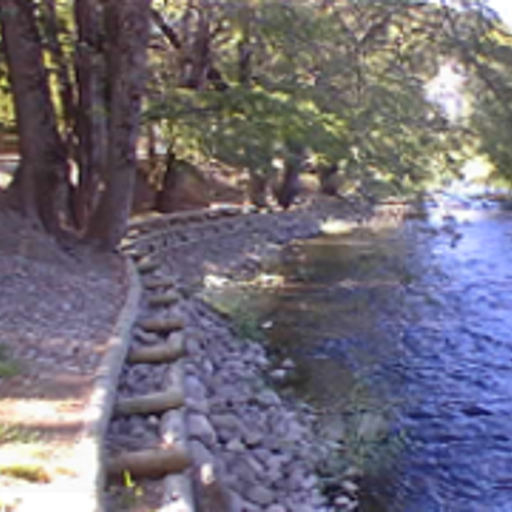LÁCAR LAKE BASIN: IMPROVING LAND USE POLICIES BASED ON AN ECOHYDROLOGICAL APPROACH SAN MARTÍN DE LOS ANDES - NEUQUÉN (ARGENTINA)


Description
Location


Sketch

Information about lithology/geochemistry:
Mesosiliceous tertiary volcanics and metamorphic and plutonic rocks
Main Description
- The demosite belongs to the Lácar Lake and Huahum River Basin (Province of Neuquén).
- Several streams and rivers drain from headwaters to the Lacar Lake. The outlet is conveyed as runoff by the Huahum/Valdivia River to the Pacific Ocean. The Pocahullo river crosses the City of San Martín de los Andes (26.000 inh) and drains the East part of the basin, equivalent to 20% of whole surface.
- 700,000 tourists visit National Parks Lanín and Nahuel Huapi. In fact, most of the watershed is under the administration of these two parks.
Enhance ecohydrological processes in novel ecosystem
YES
Apply complementary Ecohydrological processes in high impacted system
YES
This table presents the different categories of ecosystem services that ecosystem can provide, divided in:
Provisioning Services are ecosystem services that describe the material or energy outputs from ecosystems. They include food, water and other resources.

Fresh water: Ecosystems play a vital role in the global hydrological cycle, as they regulate the flow and purification of water. Vegetation and forests influence the quantity of water available locally.
Regulating Services are the services that ecosystems provide by acting as regulators eg. regulating the quality of air and soil or by providing flood and disease control.

Moderation of extreme events: Extreme weather events or natural hazards include floods, storms, tsunamis, avalanches and landslides. Ecosystems and living organisms create buffers against natural disasters, thereby preventing possible damage. For example, wetlands can soak up flood water whilst trees can stabilize slopes. Coral reefs and mangroves help protect coastlines from storm damage.

Waste-water treatment: Ecosystems such as wetlands filter both human and animal waste and act as a natural buffer to the surrounding environment. Through the biological activity of microorganisms in the soil, most waste is broken down. Thereby pathogens (disease causing microbes) are eliminated, and the level of nutrients and pollution is reduced.

Erosion prevention and maintenance of soil fertility: Soil erosion is a key factor in the process of land degradation and desertification. Vegetation cover provides a vital regulating service by preventing soil erosion. Soil fertility is essential for plant growth and agriculture and well functioning ecosystems supply the soil with nutrients required to support plant growth.
Ecosystem services "that are necessary for the production of all other ecosystem services". These include services such as nutrient recycling, primary production and soil formation.
Cultural Services corresponds nonmaterial benefits people obtain from ecosystems through spiritual enrichment, cognitive development, reflection, recreation, and aesthetic experiences.

Recreation and mental and physical health: Walking and playing sports in green space is not only a good form of physical exercise but also lets people relax. The role that green space plays in maintaining mental and physical health is increasingly being recognized, despite difficulties of measurement.

Tourism: Ecosystems and biodiversity play an important role for many kinds of tourism which in turn provides considerable economic benefits and is a vital source of income for many countries. In 2008 global earnings from tourism summed up to US$ 944 billion. Cultural and eco-tourism can also educate people about the importance of biological diversity.

Aesthetic appreciation and inspiration for culture, art and design: Language, knowledge and the natural environment have been intimately related throughout human history. Biodiversity, ecosystems and natural landscapes have been the source of inspiration for much of our art, culture and increasingly for science.
Lifezones

![]()
PPT(mm/yr): 1450.0
![]()
T(ºc): 11.0
| Elevation of demosite: | 1425.0 meters above sea level |
| Humidity: | Perhumid |
| PETr (by year): | 0.45 |
EH Principles
Quantification of the hydrological processes at catchment scale and mapping the impacts
Distribution of ecosystems and their relevant processes (ex: metabolism=water and nutrient uptake and retention; biomass production)
Ecological engineering (integration, dual regulation and biotechnologies in catchment scale for enhancement of ecological potential)
ECOHYDROLOGY ENGINEERING SOLUTIONS
Biofiltration and sediment trapping using constructed wetlands and vegetation management.
 Phytotechnology
Phytotechnology
Reducing natural and geohydrological risks through control of woody debris, and landslides and margin restoration
 Ecohydrological Infrastructure
Ecohydrological Infrastructure
Major Issues
- Deforestation and soil erosion.
- Water pollution.
- Intensive urban and road development.
- Natural and anthropogenic hazards (landslides,fire, floods (LWD, sediment).
- Overgrazing causing erosion.
- Eutrophication of the lake due to the increase of nutrients P and N.






Expected Outcomes
Main outcomes achieved: Increase security against natural hazard, enhancing of environmental services, restoration of water quality and biodiversity.
Latest Results
- After 22 years, the project has achieved its sustainability and expansion to other areas of the Andean Patagonian Region (Argentina and Chile). Is recognized as a demonstration project of regional scope in the research, design and implementation of innovative measures based on ecohydrology, soft engineering, and participatory approach. More than 10 publications, dissertations and graduation were produced.
Contacts
Lorena Laffitte
- laffittesmandes@gmail.com
- http://ambiente.neuquen.gov.ar/
- Secretaría de Ambiente - Neuquen
- http://ambiente.neuquen.gov.ar/

Social ecohydrological system
EH Objectives
EH Methodology
Catchment Ecohydrological sub-system
Objectives
Stakeholders
Catchment Sociological sub-system
Activities